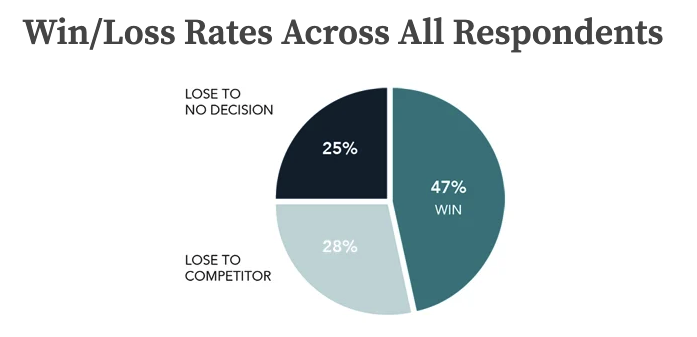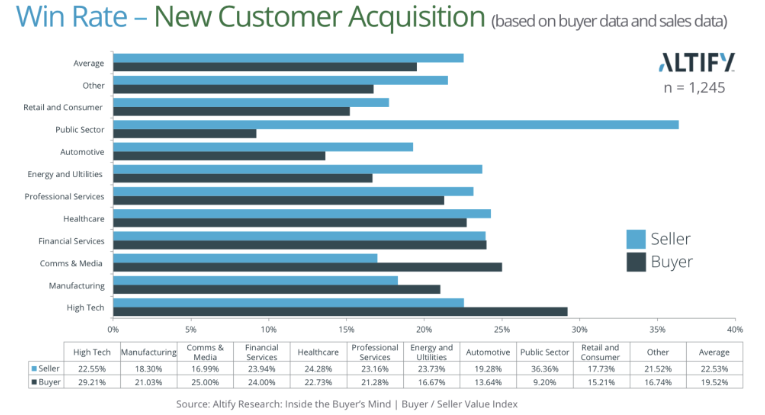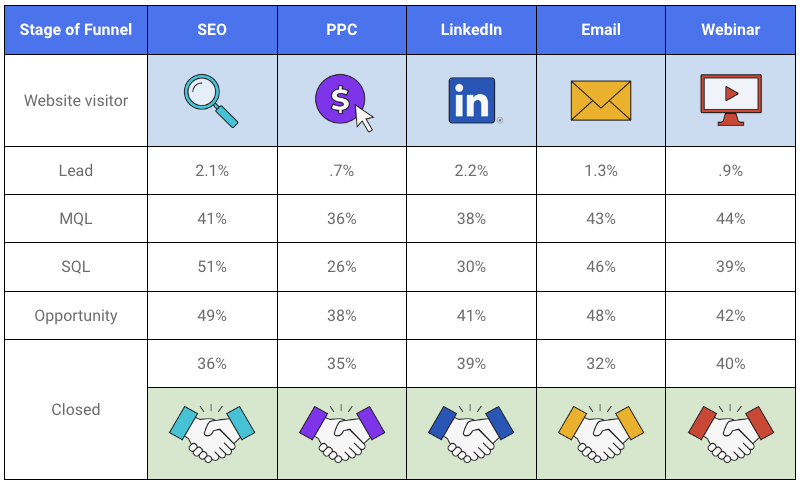In sales, the win rate (or conversion rate) refers to the percentage of deals or opportunities that a sales team successfully closes or wins. It is a key performance metric used to measure the effectiveness and efficiency of a sales process.
Win rate is calculated by dividing the number of won deals by the total number of deals or opportunities pursued, and then multiplying the result by 100 to express it as a percentage.
For example, if a sales team closed 20 out of 100 deals in a given period, the win rate would be 20/100 * 100 = 20%.
This sales metric provides insights into the sales team’s ability to convert leads or opportunities into customers. A higher win rate indicates a more successful and efficient sales process, while a lower one suggests potential areas for improvement, such as sales techniques, lead qualification, or product-market fit.
Monitoring win rates over time can help identify trends, evaluate sales strategies, and make data-driven decisions to enhance sales performance.
SaaS Conversion Rate Benchmarks
Conversion benchmarks provide a baseline for evaluating the performance of your SaaS company. Plus, by analyzing the tactics and techniques used by top-performing companies with high conversion rates, you can gain insights into best practices and identify areas where you can improve your processes, messaging, targeting, or lead nurturing efforts.
According to a study by the RAIN Group Center for Sales Research, the overall average conversion rate (across various sales industries) is 47%. However, other research has found that the SaaS win rate benchmark is lower, closer to 22%.

However, if you’re wondering how your sales team (or your own performance) stacks up against other B2B SaaS sellers, or other sellers in a specific industry, below are average sales win rates by industry based on research from Altify.

Overall, considering SaaS conversion benchmarks provides valuable insights and guidance for optimizing your sales and marketing efforts, setting realistic goals, and staying competitive in the SaaS industry.
B2B SaaS Conversion Rate Benchmarks by Channel
According to data from First Page Sage, the average win rate differs based on how the lead got in touch with your company. For example, email leads are slightly less likely to close than SEO or LinkedIn leads.

How to Increase Your Win Rate: 8 Proven Sales Strategies
To increase your win rate regardless of your business’ industry, here are some proven sales strategies you can consider:
- Effective Lead Qualification: Implement a rigorous lead qualification process to ensure you are targeting the right prospects. Identify specific criteria and attributes that make a lead more likely to convert into a customer. This helps you focus your efforts on leads with a higher probability of success, increasing your SaaS win rate benchmark.
- Personalized Sales Approach: Tailor your sales approach to each lead based on their unique needs, pain points, and goals. Conduct thorough research on the prospect before engaging with them, and demonstrate how your solution can address their specific challenges. Customizing your messaging and demonstrating a deep understanding of their business increases the chances of winning their trust and closing the deal.
- Active Listening and Needs Discovery: During sales conversations, actively listen to your prospects and ask probing questions to uncover their pain points and objectives. This allows you to position your solution as the ideal fit for their needs. Understanding their requirements deeply helps you build a strong case for why your product or service is the best choice, leading to a higher SaaS win rate benchmark.
- Clear Value Proposition: Clearly articulate the unique value and benefits your product or service offers. Focus on how it can solve their challenges, improve their operations, or help them achieve their goals. By effectively communicating the value proposition, you can differentiate yourself from competitors and increase your chances of winning the deal.
- Build Trust and Credibility: Establishing trust is crucial for winning SQLs. Provide social proof such as case studies, testimonials, and customer references to demonstrate your track record of success. Additionally, leverage your expertise and industry knowledge to position yourself as a trusted advisor. Building trust and credibility strengthens their confidence in your ability to deliver results, improving your SaaS win rate benchmark.
- Timely Follow-up: Promptly follow up with new leads to maintain engagement and keep the momentum going. Respond to inquiries, provide requested information, and address any concerns in a timely manner. A lack of responsiveness can lead to missed opportunities and lower win rates. Being proactive and responsive throughout the sales process demonstrates your commitment and increases your chances of success.
- Sales and Marketing Alignment: Ensure strong alignment between your sales and marketing teams. Collaborate closely to ensure a seamless handoff of leads from marketing to sales. Clearly define lead qualification criteria and establish effective communication channels. Alignment between sales and marketing improves lead quality, reduces friction, and increases the likelihood of converting SQLs into customers.
- Ongoing Customer Engagement: Even after winning a customer, focus on maintaining a strong relationship. Provide exceptional customer service, stay in regular contact, and offer continuous support. Satisfied customers are more likely to become brand advocates, refer your solution to others, and contribute to a higher SaaS win rate benchmark through upsells, renewals, and positive reviews.
In Conclusion…
Achieving above-average SaaS win rates requires a strategic and customer-centric approach. By implementing these proven sales strategies, and you can significantly increase your chances of success.
Embracing these strategies empowers you to outperform average SaaS win rates, differentiate your offering, and drive sustainable growth in a competitive market. Remember, consistent improvement and adaptation are essential to continuously optimize your sales process and maximize your success. Good luck!



